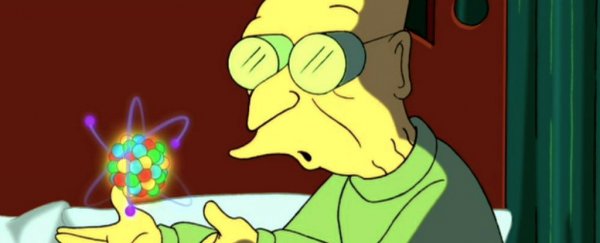As researchers around the globe race to create the next element on the periodic table - an atom that contains 119 protons - one scientist from Michigan State University is looking into where the table might end.
While there's no conclusive answer, it seems we still have a lot left to discover.
According to nuclear physicist Witold Nazarewicz, there are good reasons to think the periodic table can't be infinite. But that doesn't make predicting its limits any easier.
Right now the current heavyweight champion of atoms and the last entry on the table is the element oganesson, which in its brief flicker of existence was shown to contain 118 protons and 176 neutrons.
It was officially recognised with a name in 2016 alongside other new superheavy additions elements: 113 (nihonium), 115 (moscovium), and 117 (tennessine).
These synthetically constructed beefy particles represent a wild frontier in nuclear physics where the old rules no longer apply.
"They inhabit the remote corner of the nuclear landscape whose extent is unknown," Nazarewicz said earlier this year with regards to computer models that indicated oganesson would have an unusual electron structure.
Theory suggests we could cram as many as 184 protons together with a bunch of neutrons to make a truly gargantuan nucleus. But whether this is absolute maximum – or even if we would call it an atom – is up for debate.
One of the issues is surprisingly philosophical – is an atom still an atom if it can't hold any electrons?
Organesson has a half-life of barely a millisecond. That's hardly a solid marriage of sub-atomic particles, but it is still long enough for a family of electrons to settle into place before the divorce sends them flying again.
Far bigger nucleuses could theoretically coalesce from the wreckage of other colliding elements, but if their size saw them collapse before electrons could grab hold, it's questionable whether they should be included in the grand atomic zoo.
Assuming some were stable enough to own electrons, organesson's odd electron behaviour points to a whole lot of madness ahead.
The huge number of protons concentrated in one place creates a serious build-up of electrostatic forces that not only makes it hard for electrons to stick to expected patterns, but creates what's known as Coulomb frustration.
Usually the surface energy of an atom is enough to pull it into a roughly spherical shape. Where Coulomb frustration becomes big enough, nucleuses form bulges and voids that threaten to destabilise them.
It's possible some sorts of islands of stability exist in pockets of the periodic table's 'wild west' of superheavy elements, but we'd need some impressive computer models to determine whether their frustrations would pose a serious problem.
A mix of quantum and relativistic effects that come into play with such a build-up of particles also makes it hard to predict the characteristics of those upper range super-huge-mega-nucleuses.
Using organesson as an example once again, by the numbers it belongs in the group of noble gases. Yet its hazy shell of outer electrons makes it more reactive than its fellow nobles, and its corpulence makes it less gas-like at room temperature.
If bigger elements don't follow the rules of the periodic table, it again forces a rethink on how they should be related.
Next year it will be the 150th anniversary of Dmitri Mendeleev's formulation of the original periodic table of elements.
We've come a long way filling in the gaps with new elements that continued to suit the established pattern.
Just how much more we have to go, or whether we need to reconsider the whole system, is anybody's guess.
It's not just an academic exercise, either; though they might be short lived, establishing the reality of super heavy atoms might tell us a thing or two about extreme physics inside objects such as neutron stars.
Creating element 119 would open a new era in any case, heralding a whole new period to the table.
Science aside, there's a poetic beauty in such a potential discovery, as Nazarewicz appreciates in his quoting a haiku by the British writer Mary Soon Lee:
Will the curtain rise?
Will you open the eighth act?
Claim the centre stage?
This perspective was published in Nature Physics.
